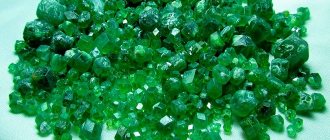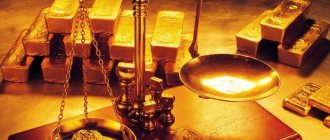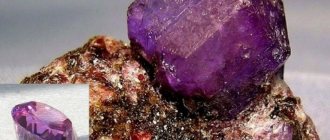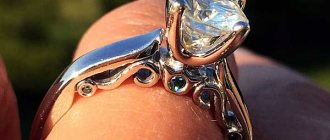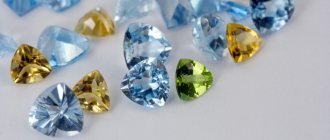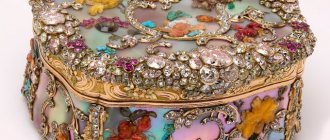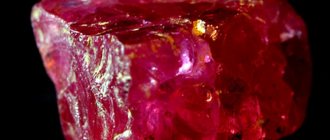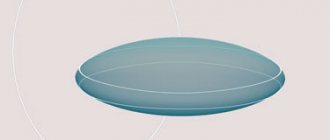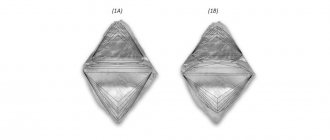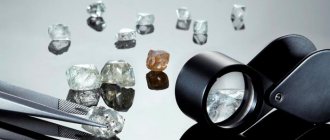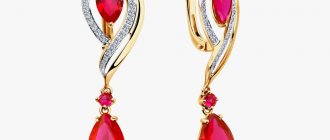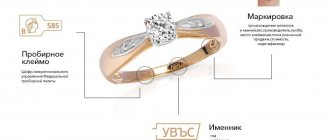Diamond can rightfully be called the king among minerals. When describing it, you can only use the epithet “most”, and not only in aesthetic descriptions, but also in technical ones.
Of course, this mineral gained its main popularity due to its jewelry value, but the percentage of all stones mined from the bowels of the earth is quite small, about 10%.
The remaining stones are used in almost all areas of industrial production. It is safe to say that most people on the planet have used tools or devices containing diamonds.
A little history
There are many legends and beliefs associated with this amazing stone. And one of them is that a diamond brings good luck to its owner. But only winners in life can own it. And famous people who wore it include Napoleon Bonaparte, Julius Caesar and Holy Roman Emperor Louis the Fourth.
Europe recognized the diamond around the 5th-6th century BC. e., but only 550 years ago it gained its incredible popularity. After all, it was then that they learned how to cut it correctly in order to maximize the properties of a diamond. And all because of its incredible property - enormous strength, while the density of diamond is 3500 kg/m3. What other known mineral can boast the same characteristics?
But the fact that many consider a diamond to be a mineral that cannot be broken has led to the loss of rare and beautiful stones. For example, in 1476, during the war between Duke Charles the Bold (one of the first owners of brilliant-cut diamonds) and King Louis XI, the king's mercenaries managed to break into a tent standing on the battlefield. They were amazed by the placers of diamonds located there. They decided to check the authenticity of the stones with a hammer, and a large number of expensive and beautiful stones were turned into dust.
Diamonds became “friends of girls” only in the middle of the fifteenth century, thanks to Agnes Sorel, the favorite of Charles the Seventh. Now you know the name of the one who made many men “unhappy.”
Diamond (Diamond) - magical and healing properties of the stone
The fact that diamonds have magical properties has been known since ancient times. Diamonds were highly valued by noble and high-ranking people, they cherished them like the apple of their eye and passed them on by inheritance. It was believed that the stone endowed its owner with power and strength, protected from troubles and bestowed the favor of higher powers.
For the first time, diamonds began to be mined in India. Their name is mentioned several thousand years BC in the Vedas, which are one of the oldest scriptures in the world. Today there are known diamond deposits in Brazil, Australia, Africa and Russia. A diamond that has undergone jewelry processing is called a diamond.
Physical properties
An ignorant person, holding a diamond in his hands, is unlikely to guess what treasure he got. The unprocessed crystal looks very simple and inconspicuous. And most often the mineral is found in nature in the form of irregularly shaped fragments. Well, transparent, well, with high light refraction, which varies from 2.417 to 2.419. What's special about it? Only a sample of an octahedral shape (two pyramids connected by a base) can attract the attention of the average person by the play of light on its edges. It is the high refraction of light that causes what we later call brilliant shine; there is no birefringence. When exposed to the sun for a long time, most stones begin to glow in the dark.
Diamond is also known for its incredible hardness - 10 out of 10 on the Mohs scale. In other words, it is the hardest mineral known on earth. But what the density of a diamond is can be easily found in a reference book. But before we look, try to guess what it should be? Based on its hardness, it is quite high. But even here the diamond shows its paradox.
High hardness is due to the special structure of the cubic crystal lattice, where there is a carbon atom in each corner. One more atom is placed in the center of the face, and 4 atoms are located inside the cube. Thus, those atoms located in the center of the face are common to two neighboring cells, and those at the vertices are common to eight. This method of packing an atom is the densest.
The crystal splits to form smooth parallels (the so-called perfect cleavage). The fracture varies from conchoidal to splintered (of course, not along the cleavage).
Let's look at the reference book: the average density of diamond is 3500 kg/cub.m. Can vary from 3.47 to 4.55 grams per cubic centimeter. Not much for such a hard mineral. According to Razival, the grinding hardness is 140000.0.
Physical and chemical characteristics of diamonds
Many jewelry lovers often ask about what this stone is made of. Diamond is a mineral consisting of almost 100 percent carbon with a small amount of various inclusions. The main characteristic of a diamond is its “absolute” and invincible hardness, which on the Mohs scale is the highest of 10 points. No artificially created material can compare in hardness to natural diamond, which does not crumble or split into pieces just like that.
Besides. The unique property of the mineral is distinguished by the following features:
- is a semiconductor of wide application ;
- distinguished by characteristic fractures (splinter, conchoidal);
- density indicator 3.5 g/cm³ ;
- highly shiny when examined closely;
- high level of refraction and dispersion ;
- the mineral luminesces after cutting and can “play” with different colors;
- It is distinguished by a special glow in X-ray, UV and cathode radiation.
If diamond is heated to a very high temperature, it transforms into graphite. And under normal temperature conditions, due to its strength and density, the stone can exist for a very long time, without being subject to any changes or influences from the external environment.
Color spectrum
Another physical property that I would like to mention is the color of the stone. And color has a significant impact on the density of a diamond. The most common ones are colorless or yellowish, some have a bluish or brown tint. Colored crystals are much less common in nature, but the color variations are very diverse: pink and red, orange and bright yellow, green and blue, purple and cognac, cherry, gray and even black. Another name for colored diamonds is fancy. Although the most expensive ones were and remain transparent, colorless or with a bluish tint, the demand for stones of rare shades is growing, which means their price is also rising.
In addition, we are accustomed to the fact that diamonds are transparent, but there are also opaque ones. Color and transparency directly depend on the chemical composition of the crystals. Another pattern has been noticed: the darker it is, the lower the density of the diamond (g/cm3).
Diamond Clarity
Diamond clarity is another important parameter that is worth paying attention to. This concept defines its transparency and the absence of external defects of the diamond. According to this criterion, diamonds are divided into 12 groups and not only the attractiveness of the diamond, but also its external qualities and durability depend on it. In this regard, cleanliness is also of particular importance and is an integral parameter that is worth paying attention to.
When choosing the purity of diamonds, you should also focus on lower values; the closer the clarity value is to one, the higher its value. However, often the most valuable stones are not affordable for everyone, so there is such a thing as the most advantageous purity group. This is group 7, in which defects are visible only at 10x magnification using a magnifying glass, and are impossible to see with the naked eye. Therefore, if you plan to wear a diamond ring or pendant as jewelry, no one will ever guess that it has any defects. And the price of a diamond in which group will be the most profitable. It is better not to buy diamonds of clarity groups 8-12, as they may have defects that are visible without a magnifying glass. Stones below group 3 are very rarely used for the production of jewelry and are extremely expensive, bought for private collections and are of particular value. On the open market you can most often find diamonds and jewelry from groups 3 to 12.
Chemical composition and properties
As already mentioned, the mineral consists of 96.0–99.8% carbon, the atoms of which are interconnected in a cubic lattice. In addition, other chemical substances are found in the crystal - oxygen, nitrogen, boron and silicon, aluminum and manganese, iron and copper, titanium and zinc, nickel, etc. Possible inclusions of olivitate and chromite, graphite and pyrope, enstatine and others.
Quite often you can find crystals containing water and carbonic acid, carbon dioxide and other substances in a gaseous state. Most often, impurities are located closer to the periphery of the crystal.
As for chemical properties, diamond is very resistant to acids and alkalis, is not wetted by water, but is easily covered with a fatty film, even from ordinary hand touch. This property is used to identify a real stone. The mineral remains chemically inert until it is exposed to high temperature.
Diamond burns at a temperature of 850 °C, producing carbon dioxide. And when heated without air access by more than 1000 °C, it turns into an allotropic modification - graphite.
Thermal characteristics
The melting point of the stone is about 4000°C. But in an environment with a high oxygen content, the combustion temperature is already 800°C. It is worth noting that by placing the crystal in an oxygen-free environment and heating it to a temperature of 2000–3000°C, it turns into ordinary graphite.
The crystal has a unique thermal conductivity; it is this characteristic, coupled with its hardness, that has led to its use in various parts and tools in the processing of various materials. Excess heat generated during operation is quickly removed, making the work process more intense.
What else does the cost depend on?
The price range for diamonds is very wide, and the cost depends on many characteristics. But in any case, the price is always indicated per carat (0.2 g):
- Cut: The most highly rated of these is the 57 facet cut, or is also called the Tolkowsky cut. For small diamonds - 17 and 33. The remaining cuts are considered fancy, and their price is much lower. But still, we list other types of cuts: “Baryon”, “Quadrillion”, “Princess”, “Marquise”, “Rose”, “Briolet”, “Pear”, “Oval”, “Heart”, “Asscher”, “Emerald” ", "Radiant", "Triliant".
- Transparency: if the transparency of a diamond is ideal, there are no cracks, including microinclusions, then the price instantly increases by an order of magnitude, or even more.
- Stone size: here we are not talking about carats, so a diamond weighing one carat in diameter can be 6.5 mm, and if other indicators are as high, then the cost can be 10-12 thousand dollars per carat.
- Color. It all depends on fashion trends and the whims of the client. But the most valuable are still considered colorless and with a bluish tint.
Diamond quality: what should you consider?
First of all, I would like to clarify that it is of great importance what size diamond you want to buy. The options may be as follows:
- small diamonds (up to 0.29 carats);
- medium diamonds (0.29-0.99 carats);
- large diamonds (from 0.99 carats and above).
If you want to buy earrings with diamonds, most likely we are talking about small stones and it is not necessary to study the topic in detail when making such a purchase. Despite their high cost, small diamonds are not particularly valuable and practically do not vary in price. If we are talking about buying medium or large diamonds, it is best to thoroughly study this issue. You don't have to be a professional and spend years studying gemstones. You just need to know the basics that will help you navigate your choice and you are guaranteed to make a better purchase than if you buy the first diamond you come across.
Application
Having studied the properties of diamond, we can safely say: the stone is simply unique. But it is now used not only in jewelry. Science and industry take part of the world's stone reserves for their own needs. They only use small or defective stones.
What properties are valued by science and industry:
- high thermal conductivity;
- hardness;
- transparency (the ability to transmit UV and IR rays);
- crystal structure (can be a conductor, insulator). It can withstand high voltage and sudden temperature changes.
Medicine did not stand aside either, using diamonds in surgery. Scalpels are now being produced with diamond blades. Sharpening these blades makes the cuts super-fine. In laser machines, wounds are cauterized using diamonds. In laboratories with hazardous chemicals, diamond windows are installed.
Construction and repair tools, both for household use and professional ones - saws, metal knives, cutters and glass cutters, grinding wheels and much more - are coated with diamond chips to increase their service life. The tunnels are laid using a so-called roadheader. His knives are covered with a layer of diamond chips.
In the school curriculum
Such a characteristic as diamond density is found even in the school curriculum. They study it in a subject such as physics, in the section “Fundamentals of molecular kinetic theory” in the 10th grade. And the problem is solved. It sounds like this in full:
There is a diamond whose density in kg/m3 is 3500. What volume will the atoms of the substance occupy in the amount of 1022? (Myakishev’s problem book). It turns out that the properties of diamonds are studied in school. And it’s not only in this problem book that similar problems can be found. It is also possible to write the condition like this:
- The density of diamond is 3500. What volume will 1022 of its molecules occupy?
Diamond cut
This is one of the most difficult characteristics to understand, but at the same time, not only the cost, but also how the stone will play and how beautiful it will be overall depends on the quality of the cut. There are only three three cut groups. Group A, Group B and C cut. Each mineral (carbon atom) is cut from diamond before becoming a diamond. And in turn, its proportions, diameter, height and stretch depend on how the diamond is cut. It is almost impossible to understand such parameters with the naked eye; for this you need to be an experienced expert. But it is worth remembering that it is best to buy ideal cut diamonds of group A. Groups B and C represent the least value.
